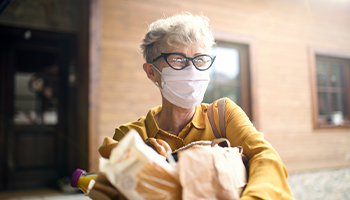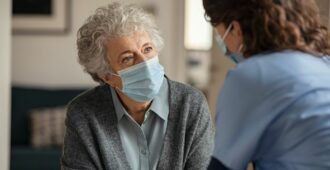

Since June 2020, the Sax Institute’s 45 and Up Study has been collecting and providing critical information on people’s behaviours and attitudes during the pandemic through its COVID Insights Surveys. Supported by a NSW Government grant, these are among the largest COVID surveys in Australia and have involved over 60,000 participants to date. In total, five surveys have been planned between 2020 to early 2022.
Data from the surveys are being made available to researchers and policy makers, and have been used by governments to fill important information gaps and have helped support decisions. Importantly, the information collected, along with other data available through the 45 and Up Study, can be used into the future to understand the ongoing effect of the COVID pandemic on the health and well-being of the population.
The surveys offer a real-time snapshot of health and wellbeing during the pandemic across a range of areas, including mental health, lifestyle, physical activity, diet, sleep, alcohol use, access to health services, and the compounding effect of bushfires and drought. Now, as vaccination rates continue to increase across the country, new survey results out this month yield fascinating insights into people’s varying concerns, barriers and access to vaccination.
Understanding attitudes to vaccination has been a critical concern during the rollout. This survey, carried out between June and September, found that 90%of participants felt the COVID-19 vaccines were either moderately or very safe. More than two-thirds (69%) of those not yet vaccinated said they intended to get the vaccine, with 10% reporting either that they would not or were unsure about vaccination.
A key challenge for policy makers is ensuring effective access to vaccination. Our survey found that 70% of those already vaccinated reported getting the vaccine was very easy, with only 4% responding that it was not at all easy. However, 29% of people yet to be vaccinated said it was not at all easy to get the vaccine. Those living in most disadvantaged areas (32%) and outer regional areas (33%) and people with multiple chronic conditions (32%) were more likely to report that it was difficult to get vaccinated.
In the coming months, as restrictions begin to be relaxed, it will be important for policy makers to understand how behaviours are changing and the extent to which social distancing, mask wearing and getting tested are continuing. In our survey, 97% of people said they were moderately or very likely to wear a mask during an outbreak once they’re fully vaccinated. Practising physical distancing and hand hygiene post-vaccination were also supported, with 93% and 98% of people, respectively, saying they were moderately or very likely to continue once vaccinated. However, once vaccinated, only 75% of people said they would get a COVID test if they had cold or flu symptoms.
Missed healthcare and mental health
The latest survey also features questions in other important areas of concern, such as missed healthcare and mental health during the pandemic. Around 16% of survey respondents missed or delayed a healthcare appointment in the previous month, most commonly a dentist (53%) or GP (32%) appointment. Sixty-five percent of those hadn’t subsequently sought another appointment yet. The reason for missing or delaying healthcare was most commonly because it was not deemed urgent (39%), although 21% cited fear of catching COVID.
Missed cancer screening is a particular concern, with 9% of women under 75 saying they missed breast screening due to the pandemic, half of whom had still not caught up by the time they were surveyed.
The news on mental health is mixed: while 94% of respondents report their quality of life as good to excellent, 9% were intensely lonely. Around a third of those surveyed said their mental health had worsened due to the pandemic, up from 10% in a survey carried out earlier in the year. Financial issues were a major concern, with 32% worried that their money wouldn’t last and 12% never or rarely having money left over at the end of the month and 3% concerned about becoming homeless.
Sax Institute Deputy CEO Dr Martin McNamara says the latest survey results are starting to tell a story about how we’re going to manage the next phase of the pandemic.
“Through these surveys, the 45 and Up Study is providing critical data and insights that will help guide policy and health services in the coming months and years,” he says.
“There’s a lot of information of varying quality out there, but what we can uniquely offer is a huge cohort of participants and a long-established study design with highly reliable results. We know a lot about our participants – we can track how their circumstances are changing over time and link up our results with a range of health datasets, so there’s a lot we can draw out of the information we’re collecting. The 45 and Up Study and the COVID Insights surveys will continue to be a source of knowledge about people’s experiences as we move into new phases of the pandemic, as vaccinations continue to roll out and restrictions are gradually lifted.”
- Find out more about 45 and Up COVID Insights Surveys here.





